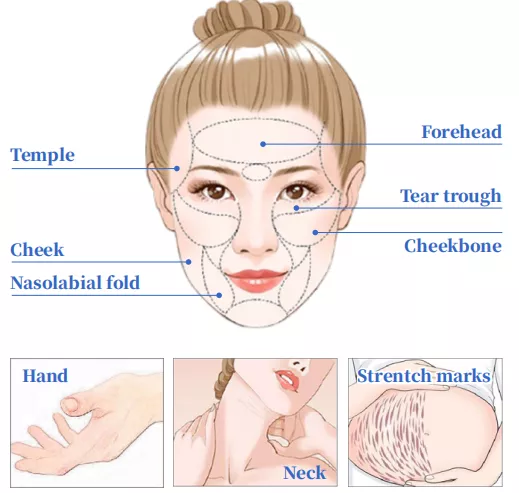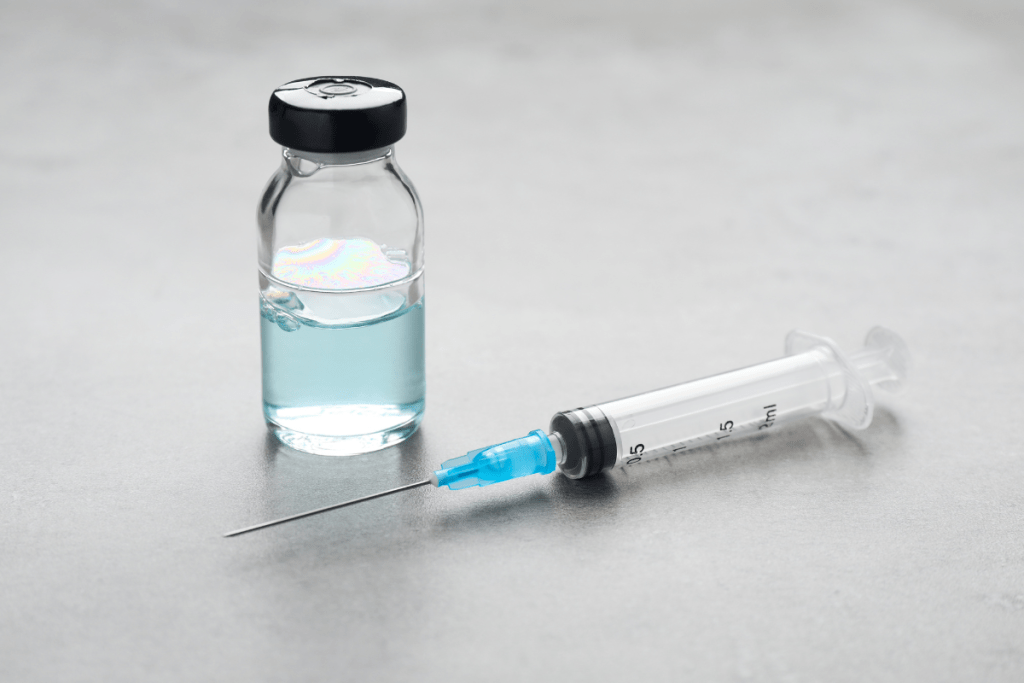The quest for effective facial volume restoration has driven significant advancements in aesthetic medicine, with various dermal fillers now available to meet diverse patient needs. Among these options, calcium hydroxylapatite (CaHA) and poly-lactic acid (PLLA) fillers have emerged as leading choices, each offering distinct benefits and mechanisms of action. For medical practitioners, understanding the nuanced differences between these fillers is crucial for delivering tailored and effective treatment solutions that align with patient goals.
What are Calcium Hydroxylapatite and Poly-L-lactic Acid Fillers?
Calcium hydroxylapatite (CaHA) and poly-lactic acid (PLLA) fillers represent two distinct strategies for addressing volume loss and enhancing facial contours. CaHA is well-known for its immediate volumizing effects, providing instant results while stimulating collagen production over time. In contrast, PLLA employs a gradual approach, focusing on long-term collagen stimulation to achieve subtle and natural-looking improvements.
The choice between CaHA and PLLA depends on several factors, including the desired outcome, treatment area, and patient preferences. CaHA is ideal for those seeking quick volume restoration and lifting effects, particularly in areas with deeper wrinkles and significant volume loss. At the same time, PLLA is suited for patients desiring a more gradual enhancement with sustained results for comprehensive facial rejuvenation.
Buy PLLA Fillers
- MAYSTER PDRN / HA / PLLA SKIN BOOSTER SET
- Sculptra 2 Vials (2x5ml)
- Sculptra 1 Vial (1x5ml)
- REPLENGEN™
- Lanluma Lanluma V (15ml)
- POWERFILL® 1 Vial
- AESTHEFILL®
- Rejubeau Stylish Le Ciel Rosy (365mg)
What Are the Top Poly-L-Lactic Acid (PLLA) Filler Brands?
One PLLA filler brand stands above the rest, at least in the United States: Sculptra® Aesthetic.
Sculptra Aesthetic treatments usually necessitate multiple injection sessions, with results emerging gradually over weeks or even months. However, once the results appear, they are long-lasting. In fact, PLLA is often regarded as functionally permanent.
Poly-L-lactic Acid Filler: A Gradual and Natural Approach
Polylactic acid (PLLA) is a biodegradable, biocompatible synthetic polymer that has gained prominence in aesthetic medicine. It stimulates the body’s natural collagen production, leading to gradual and natural-looking volume restoration. Unlike traditional fillers that provide immediate results, PLLA requires a series of injections over a few months to achieve the desired effect. This gradual approach can appeal to patients seeking subtle, progressive changes rather than a sudden transformation.

PLLA Filler: Long-lasting Results and Biostimulatory Benefits
Polylactic acid (PLLA) fillers are known for longevity, often lasting up to two years or more, depending on the patient and treatment area. The biostimulatory nature of PLLA promotes collagen synthesis, enhancing skin texture, elasticity, and overall facial rejuvenation. This filler is particularly effective in treating volume loss in the cheeks, temples, and nasolabial folds. However, its delayed onset of action requires patient education and careful management of expectations.
Calcium Hydroxylapatite Filler: Immediate Results with Lifting Effect
Calcium hydroxylapatite (CaHA) is another popular choice for facial volume restoration. It consists of microspheres suspended in a gel carrier, providing immediate volume and lifting effects upon injection. CaHA offers instant results and stimulates collagen production over time, contributing to sustained improvements in skin quality. It is often used for deeper creases and folds, as well as to improve facial contouring.
Polylactic Acid for Skin: Versatility and Applications
Both PLLA and CaHA fillers utilize the principles of biostimulation, but their applications can differ based on patient needs and anatomical considerations. PLLA is exceptionally versatile and suitable for extensive volume restorations and subtle contouring. CaHA, with its immediate effects, is favored for areas requiring a noticeable lift or correction. Understanding the properties of polylactic acid in the context of skin rejuvenation allows practitioners to tailor treatments to individual patient profiles.
Key PLLA Considerations for Medical Practitioners
When considering PLLA for volume restoration, discussing the treatment process, expected timeline, and potential side effects with patients is essential. The gradual nature of PLLA’s results necessitates a commitment to multiple sessions and patience from both the practitioner and the patient. Additionally, practitioners should be skilled in injection techniques specific to PLLA to optimize outcomes and minimize complications.
Frequently Asked Questions (FAQs)
Are there any contraindications for using CaHA or PLLA fillers?
CaHA fillers are generally contraindicated in patients who have active skin infections or inflammation in the treatment region. They should also be used with caution in individuals with severe allergies or a history of severe allergic reactions. PLLA fillers are not recommended for patients who have a history of severe allergic responses to any part of the product or those with active skin conditions or infections at the injection site.
How do the injection techniques differ between CaHA and PLLA fillers?
The injection techniques for CaHA and PLLA fillers differ due to their distinct properties. CaHA is often injected using a method that places the filler in the deeper dermis or subcutaneous tissue layers to achieve immediate volumizing and lifting effects. PLLA, on the other hand, is typically injected in multiple layers and requires a specific technique to ensure even distribution and optimal stimulation of collagen production. Practitioners must be skilled in the appropriate methods for each filler to maximize results and minimize complications.
Can CaHA and PLLA fillers be combined with other aesthetic treatments?
Both CaHA and PLLA fillers can be combined with other aesthetic treatments, such as neuromodulators (e.g., Botox) and other dermal fillers, to achieve a comprehensive rejuvenation plan. Combining treatments can enhance overall results, addressing multiple aspects of facial aging. However, it is essential for practitioners to carefully plan and time the combination of treatments to avoid potential interactions and ensure optimal outcomes.
How should patients prepare for treatment with CaHA or PLLA fillers?
Patients should be advised to avoid blood thinners, such as aspirin or nonsteroidal anti-inflammatory medications (NSAIDs), for a few days before treatment to minimize the risk of bruising. They should also be encouraged to avoid alcohol and excessive sun exposure in the days leading up to the procedure. A pre-treatment consultation is essential to assess individual needs, discuss expectations, and provide personalized recommendations for optimal results.






